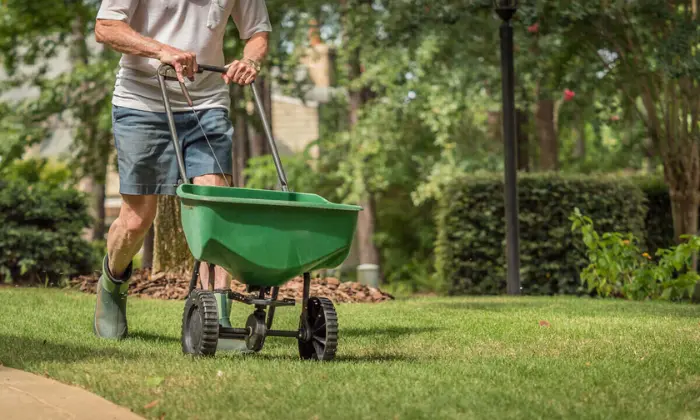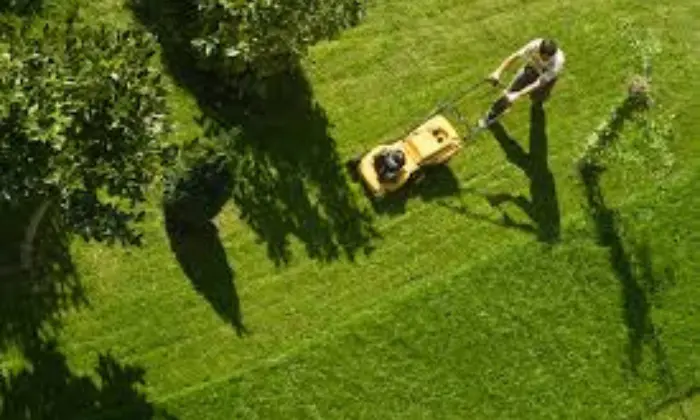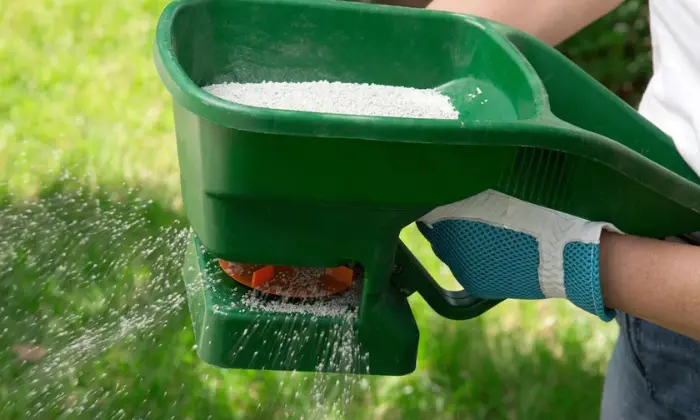Fertilizing your lawn is a crucial aspect of lawn care that directly impacts its health, appearance, and resilience. Knowing when to fertilize the lawn ensures that your grass receives the necessary nutrients at the right times, promoting lush growth and vibrant color while preventing issues like weed infestation and disease. This guide will outline the best times to fertilize your lawn, taking into account factors such as grass type, climate, and seasonal variations. By following these recommendations, you can maintain a healthy and beautiful lawn throughout the year.
When to Fertilize Lawn

Fertilizing your lawn at the right time is crucial for its health and appearance. Here’s a general guide on when to fertilize lawn:
Early Spring: Apply fertilizer when the grass starts actively growing again after winter dormancy. This usually happens when soil temperatures reach around 55°F to 65°F (12°C to 18°C). Fertilizing at this time helps kick start growth and provides essential nutrients for the upcoming growing season.
Late Spring: A second application of fertilizer can be beneficial in late spring, typically around 6 to 8 weeks after the initial application. This helps maintain healthy growth and replenishes nutrients that may have been depleted.
Summer: Depending on your grass type and climate, fertilizing in summer might not be necessary or even recommended. Cool-season grasses may benefit from a light application early in the summer if growth has slowed due to heat stress, while warm season grasses may thrive without additional fertilization.
Early Fall: This is one of the most important times to fertilize your lawn. Applying fertilizer in early fall helps strengthen leaving grass roots and prepares the Best lawn care for winter. Aim to fertilize around 6 to 8 weeks before the first expected frost.
Late Fall: A final application of fertilizer in late fall, usually around late October to early November, helps promote root system growth and provides nutrients that will be stored over the winter. This application encourages a quicker green-up in the spring.
Best Time to Fertilize Your Lawn

Understanding the best time to fertilize your lawn is crucial for maintaining its health and appearance. In general, spring and fall are the optimal seasons for fertilization, with early spring promoting growth and late fall preparing the Best grass for hot weather. Consider your local climate and grass type when scheduling fertilization, and avoid applying fertilizer during periods of extreme heat or drought. By timing fertilization appropriately, you can ensure that your lawn receives the nutrients it needs to thrive, resulting in lush, green grass year-round.
Spring
Spring is an ideal time of year to fertilize your lawn, as it promotes the vigorous growth of grass following the dormancy of winter. Early spring fertilization provides the necessary nutrients for greening and encourages root system development. Aim to fertilize in late March to early April, depending on your location and grass type.
Summer
While fertilizing in summer can help maintain lawn care health, it’s crucial to be cautious due to the risk of heat stress. Avoid fertilizing during periods of extreme heat, as this can potentially harm the grass. If fertilizing in summer, opt for slow-release or low-nitrogen formulations to prevent rapid growth that may be susceptible to heat stress and disease.
Fall
Fall is perhaps the most important time to fertilize your grass lawn. Fertilizing in early to mid-fall promotes root growth and nutrient storage, helping grass plants prepare for the winter months. Choose a fertilizer with a higher ratio of potassium to strengthen the grass and enhance cold tolerance. Aim to fertilize in late September to early October for optimal results.
Winter (Minimal Fertilization)
In winter, grass growth slows down or becomes dormant in colder regions. While minimal fertilization may be beneficial in some areas with milder winters, it’s generally not necessary or recommended for cool season grasses Focus on other winter fertilizer tasks such as aeration and overseeding.
Climate Factors
Consider your local climate when determining the best time to fertilize your lawn grass. Regions with distinct cool season grasses may have different fertilization schedules compared to areas with milder or more consistent climates. Adjust your fertilization timing based on factors such as temperature, precipitation, and frost dates in your area.
Grass Type Considerations
Different grass types have varying nutrient requirements and growth patterns. Warm season grasses like Bermuda grass and Zoysia grass thrive during the warmer months and may require fertilization in late spring or early summer. Cool-season grasses such as Kentucky bluegrass and fescue perform best with fall fertilization to promote root growth and winter hardiness. Choose fertilizers specifically formulated for your grass type to ensure optimal results.
By considering seasonal variations, climate factors, and grass type considerations, you can determine the best time to fertilize your lawn and achieve healthy, vibrant turf throughout the year.
How Often to Fertilize Your Lawn

How long winter fertilizer work Because Fertilization plays a vital role in maintaining the health and vigor of your lawn. Here are some key reasons why fertilizing your lawn is important:
Nutrient Supply: Fertilizers provide essential nutrients like nitrogen, phosphorus, and potassium that grass needs for growth, development, and overall health. These nutrients may be deficient in the soil or depleted over time due to grass uptake or environmental factors.
Promotes Growth: Adequate fertilization encourages robust grass growth, resulting in a dense and lush lawn. This not only enhances the aesthetic appeal but also helps to crowd out weeds and resist pest infestations.
Enhances Color: Fertilizers contain elements that contribute to the vibrant green color of grass. Regular fertilization can help maintain a rich and consistent green hue, improving the overall appearance of your lawn.
Strengthens Roots: Healthy grass roots are essential for nutrient uptake, water absorption, and drought resistance. Fertilizers with appropriate formulations can stimulate root growth, leading to a stronger and more resilient turf.
Improves Stress Tolerance: Fertilized lawns are better equipped to withstand environmental stresses such as extreme temperatures, drought, and foot traffic. The balanced nutrients provided by fertilizers help to fortify grass plants against these challenges.
Prevents Soil Erosion: Dense, healthy turf created through proper fertilization helps to anchor soil in place, reducing the risk of erosion caused by water or wind.
Supports Recovery: Fertilization can aid in the recovery of damaged or stressed lawns by promoting new growth and facilitating the repair of bare patches or thin areas.
Overall, regular fertilization is essential for sustaining a vibrant, resilient, and attractive lawn that enhances the beauty and value of your property.
Tips for Effective Lawn Fertilization

Tips for effective lawn fertilization include soil testing to assess nutrient levels, selecting the right fertilizer for your grass type, following proper application techniques, considering slow-release options, watering after fertilizing, and maintaining a consistent fertilization schedule based on seasonal needs. By adhering to these guidelines, you can ensure that your lawn receives the necessary nutrients for healthy growth and vibrant appearance.
Soil testing
Before fertilizing your lawn, conduct a soil test to determine its nutrient levels and pH balance. Soil testing kits are available at garden centers or through local agricultural extension offices. Testing helps you understand which nutrients your lawn needs and prevents overapplication of fertilizer, which can harm the environment.
Choosing the right fertilizer
Select a fertilizer formulation based on your soil test results and the specific needs of your lawn. Look for a balanced fertilizer with a ratio of nitrogen (N), phosphorus (P), and potassium (K) appropriate for your grass type and growth stage. Consider using slow-release fertilizers for steady nutrient release and reduced risk of leaching or runoff.
Proper application techniques
Follow these guidelines for effective fertilizer application:
- Use a calibrated spreader to ensure even distribution of fertilizer across the lawn.
- Apply fertilizer when the grass is actively grow & dry to prevent clumping and ensure uniform coverage.
- Avoid fertilizing during windy conditions to minimize drift.
- Water the lawn lightly after application to help activate the fertilizer and prevent burn.
- Sweep any excess fertilizer off sidewalks, driveways, and other hard surfaces to prevent runoff into waterways.
Environmental consideration
Be mindful of environmental impacts when fertilizing your lawn:
- Avoid fertilizing before heavy rainfall to prevent nutrient runoff into water bodies.
- Keep fertilizer away from water sources such as ponds, streams, and storm drains.
- Follow local regulations regarding fertilizer application, especially near water bodies or sensitive ecosystems.
- Consider using organic or low-phosphorus fertilizers to minimize environmental harm.
- Use fertilizers sparingly and only apply what is necessary to meet the lawn’s needs, reducing the risk of nutrient pollution.
By following these tips for effective lawn fertilization, you can promote a healthy, vibrant lawn while minimizing environmental impact.
Conclusion
In conclusion, when to fertilize lawn is essential for maintaining a healthy, vibrant lawn year-round. By considering factors such as seasonal timing, climate conditions, and grass type, you can effectively schedule fertilization to promote robust growth and resilience. Remember to test your soil, choose the right fertilizer, apply it correctly, and maintain a regular schedule for optimal results. With careful attention to these guidelines, you can enjoy a lush, green lawn that enhances the beauty of your outdoor space. For any kind of query feel free to Contact Us Today!
FAQS
When is the best time to fertilize my lawn?
The best time to fertilize your lawn depends on factors such as the season, climate, and grass type. In general, early spring and late fall are optimal times for fertilization, with adjustments based on regional conditions and grass varieties.
How often should I fertilize my lawn?
Fertilization frequency varies depending on factors like soil quality, grass type, and environmental conditions. In most cases, a schedule of 2-4 applications per year is recommended, with additional treatments as needed based on soil tests and lawn health assessments.
Can I fertilize my lawn during the summer months?
While fertilizing during summer is possible, it’s important to be cautious due to the risk of heat stress. If fertilizing during summer, choose a time when temperatures are moderate and avoid applying fertilizer during periods of extreme heat.
What type of fertilizer should I use for my lawn?
The type of fertilizer you use should be tailored to your specific lawn’s needs and grass type. Look for fertilizers with balanced nutrient ratios and consider slow-release formulations for steady nutrient release over time.
Is it necessary to water my lawn after fertilizing?
Watering your lawn after fertilizing is generally recommended to help activate the nutrients and prevent burning of the grass. However, the amount of water needed may vary depending on the fertilizer type and environmental conditions.


